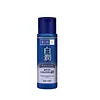What's inside
What's inside
 Key Ingredients
Key Ingredients

 Benefits
Benefits

 Concerns
Concerns

No concerns
 Ingredients Side-by-side
Ingredients Side-by-side

Water
Skin ConditioningGlycerin
HumectantMethylpropanediol
SolventBetaine
HumectantTrehalose
HumectantPPG-10 Methyl Glucose Ether
Skin ConditioningNiacinamide
SmoothingPentylene Glycol
Skin ConditioningDiglycerin
HumectantGlycereth-26
HumectantAlpha-Arbutin
AntioxidantChlorphenesin
AntimicrobialPolysorbate 20
EmulsifyingHydroxylated Lecithin
EmulsifyingDisodium EDTA
Sodium Metabisulfite
AntioxidantSodium Hyaluronate
HumectantHydrolyzed Sodium Hyaluronate
Skin Conditioning3-O-Ethyl Ascorbic Acid
Skin ConditioningResveratrol
AntioxidantWater, Glycerin, Methylpropanediol, Betaine, Trehalose, PPG-10 Methyl Glucose Ether, Niacinamide, Pentylene Glycol, Diglycerin, Glycereth-26, Alpha-Arbutin, Chlorphenesin, Polysorbate 20, Hydroxylated Lecithin, Disodium EDTA, Sodium Metabisulfite, Sodium Hyaluronate, Hydrolyzed Sodium Hyaluronate, 3-O-Ethyl Ascorbic Acid, Resveratrol
Water
Skin ConditioningDiglycerin
HumectantGlycerin
HumectantTranexamic Acid
AstringentButylene Glycol
HumectantPEG-8
HumectantPEG-6
HumectantPEG-32
HumectantPPG-24-Glycereth-24
EmulsifyingMethylparaben
PreservativeCarbomer
Emulsion StabilisingPolysorbate 20
EmulsifyingStyrene/Vp Copolymer
Disodium EDTA
Hydrolyzed Hyaluronic Acid
HumectantMagnesium Ascorbyl Phosphate
AntioxidantTocopherol
AntioxidantSodium Hyaluronate
Humectant
 Reviews
Reviews

Ingredients Explained
These ingredients are found in both products.
Ingredients higher up in an ingredient list are typically present in a larger amount.
Diglycerin is a humectant. It is derived from glycerin, which is naturally found in your skin.
As a humectant, it helps draw moisture to the skin from the air.
Disodium EDTA plays a role in making products more stable by aiding other preservatives.
It is a chelating agent, meaning it neutralizes metal ions that may be found in a product.
Disodium EDTA is a salt of edetic acid and is found to be safe in cosmetic ingredients.
Learn more about Disodium EDTAGlycerin is already naturally found in your skin. It helps moisturize and protect your skin.
A study from 2016 found glycerin to be more effective as a humectant than AHAs and hyaluronic acid.
As a humectant, it helps the skin stay hydrated by pulling moisture to your skin. The low molecular weight of glycerin allows it to pull moisture into the deeper layers of your skin.
Hydrated skin improves your skin barrier; Your skin barrier helps protect against irritants and bacteria.
Glycerin has also been found to have antimicrobial and antiviral properties. Due to these properties, glycerin is often used in wound and burn treatments.
In cosmetics, glycerin is usually derived from plants such as soybean or palm. However, it can also be sourced from animals, such as tallow or animal fat.
This ingredient is organic, colorless, odorless, and non-toxic.
Glycerin is the name for this ingredient in American English. British English uses Glycerol/Glycerine.
Learn more about GlycerinPolysorbate 20 is made by combining ethoxylation of sorbitan, ethylene oxide, and lauric acid. It is a mild cleansing agent, surfactant, and emulsifier.
As a surfactant, it helps collect dirt and oils for washing. Emulsifiers prevent oils and water from separating.
Polysorbate 20 also adds scent to a product. Since it is made using sorbitol, it has a sweet scent. Sorbitol can also be found in fruits such as apples and peaches.
The lauric acid used to create Polysorbate 20 is often derived from coconuts.
Polysorbate 20 may not be fungal acne safe.
Learn more about Polysorbate 20Sodium Hyaluronate is hyaluronic acid's salt form. It is commonly derived from the sodium salt of hyaluronic acid.
Like hyaluronic acid, it is great at holding water and acts as a humectant. This makes it a great skin hydrating ingredient.
Sodium Hyaluronate is naturally occurring in our bodies and is mostly found in eye fluid and joints.
These are some other common types of Hyaluronic Acid:
Learn more about Sodium HyaluronateWater. It's the most common cosmetic ingredient of all. You'll usually see it at the top of ingredient lists, meaning that it makes up the largest part of the product.
So why is it so popular? Water most often acts as a solvent - this means that it helps dissolve other ingredients into the formulation.
You'll also recognize water as that liquid we all need to stay alive. If you see this, drink a glass of water. Stay hydrated!
Learn more about Water